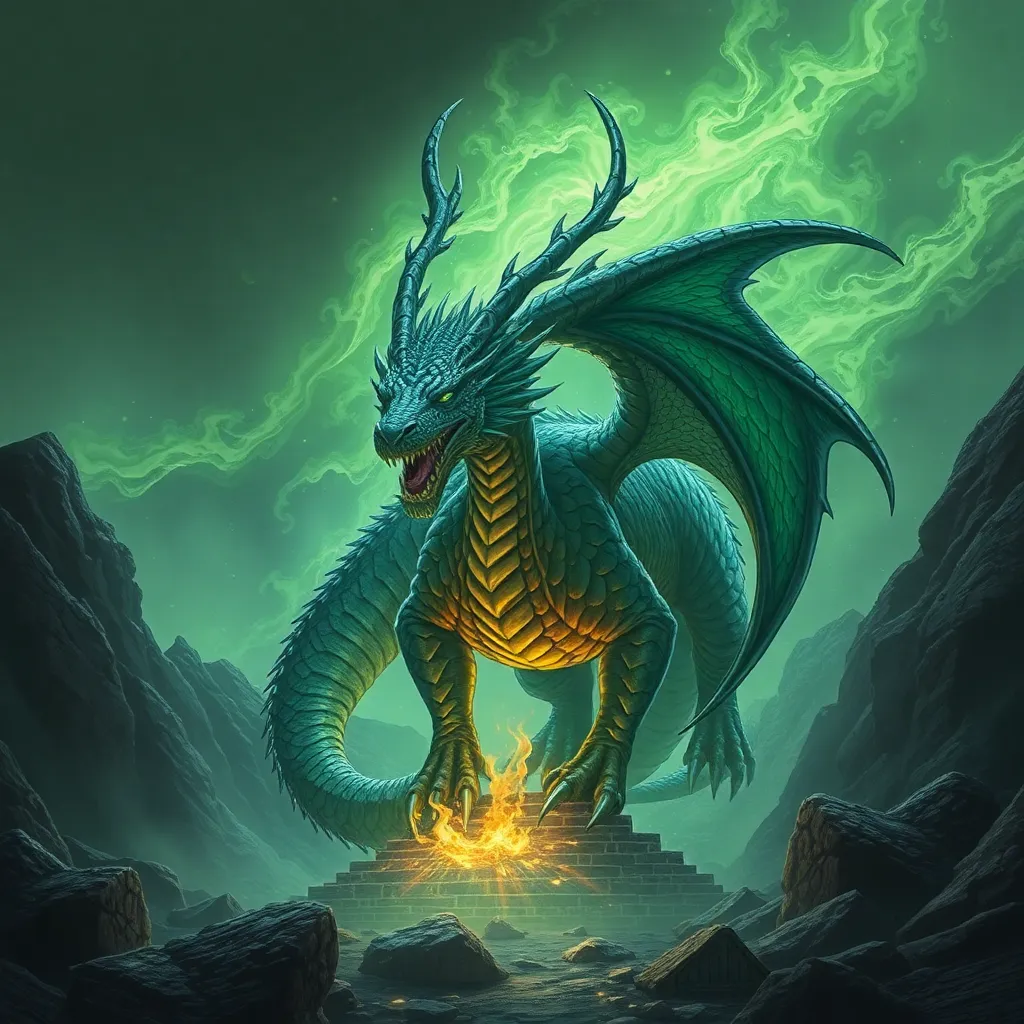The Dragon’s Scales: Exploring the Protective Elements of Fafnir
I. Introduction to Fafnir: The Legendary Dragon
Fafnir is one of the most formidable creatures in Norse mythology, known for his transformation from a dwarf to a fearsome dragon. His story is steeped in themes of greed, power, and the tragic consequences of desire. In various mythological narratives, dragons symbolize both the protective and destructive forces within nature and humanity. This article aims to explore the significance of Fafnir’s scales, analyzing their symbolism and the protective elements they represent.
II. The Mythical Origins of Fafnir
The tale of Fafnir begins with his origins as a dwarf, a member of the race known for their craftsmanship and greed. According to the myth, Fafnir and his brother Regin were the sons of the dwarf Hreidmar. They inherited a hoard of gold, which was cursed by the original owner, the giant Andvari. This curse led Fafnir to kill his father and ultimately transform into a dragon to guard the treasure.
The transformation of Fafnir from dwarf to dragon is a pivotal moment in his story, symbolizing the corrupting influence of greed. The gold, once a source of wealth, becomes a burden, and Fafnir’s scales serve as a physical manifestation of this transformation. His scales are not just defensive armor but also represent the isolation and alienation that result from his insatiable desire for wealth.
III. Symbolism of Dragon Scales in Mythology
Dragon scales have been a recurring motif across various cultures, often symbolizing power, protection, and wisdom. In many mythologies, dragons are guardians of treasures, representing both the allure and danger of material wealth.
- Cultural Significance: In Eastern cultures, dragons are often viewed as benevolent creatures, embodying strength and protection.
- Western Interpretation: In contrast, Western dragons, like Fafnir, are often depicted as malevolent beings hoarding riches.
Fafnir’s scales serve as a representation of these dualities. They signify immense power and protection against intruders while simultaneously acting as a burden that isolates him from the world. The scales become both a shield and a prison, highlighting the complex nature of strength and vulnerability.
IV. The Physical Properties of Fafnir’s Scales
Descriptions of Fafnir’s scales can be found in various texts, including the “Völsunga saga.” His scales are often depicted as impenetrable, a feature that enhances his fearsome reputation. In contrast to other dragons found in mythology, Fafnir’s scales are uniquely tied to his character development and his tragic narrative.
- Comparative Analysis: Other dragons, like Smaug from J.R.R. Tolkien’s “The Hobbit,” also possess formidable scales, yet they are often portrayed as more traditional guardians of treasure.
- Imagined Strength: The resilience of dragon scales is a common theme, often described as being able to withstand great force and magical attacks.
This imagined strength contributes to the legend of Fafnir, making him a formidable adversary for any hero who dares to confront him.
V. The Protective Elements of Fafnir’s Scales
Fafnir’s scales play a crucial role in his ability to defend against heroes and intruders. They not only protect him physically but also symbolize the psychological barriers he erects against the outside world. The scales serve as a reminder of his tragic choices and the consequences of his greed.
Moreover, the metaphorical protection offered by Fafnir’s scales can be interpreted as a warning against the dangers of isolation. While his scales shield him from external threats, they also separate him from companionship and love.
The implications of invulnerability raise important questions about the nature of power. Is true strength found in being untouchable, or does it lie in vulnerability and connection with others? Fafnir’s scales embody this conflict.
VI. Fafnir’s Scales in Modern Adaptations
In contemporary literature and media, Fafnir continues to be a compelling character. His representation has evolved, reflecting changing cultural attitudes towards dragons and their symbolism.
- Modern Literature: Fafnir appears in various forms, from fantasy novels to video games, often retaining his status as a powerful dragon.
- Media Representation: Movies and TV shows reinterpret Fafnir, sometimes portraying him as a tragic figure rather than merely a villain.
This evolution highlights the enduring fascination with dragon imagery, as well as the reinterpretation of their protective qualities. Modern adaptations often explore the deeper psychological aspects of characters like Fafnir, emphasizing themes of redemption and the consequences of one’s choices.
VII. Lessons from Fafnir: The Balance of Power and Vulnerability
The story of Fafnir serves as a cautionary tale about the moral implications of greed and the pursuit of power. His transformation into a dragon illustrates the isolating effects of his desires, serving as a reminder of the importance of balance in life.
- Moral Implications: Fafnir’s greed ultimately leads to his downfall, suggesting that unchecked ambition can have dire consequences.
- Balance of Protection and Isolation: The protective elements of his scales reflect the dual nature of strength; while they guard, they also isolate.
In today’s context, Fafnir’s story resonates with the struggles individuals face in balancing ambition with connection, urging a reflection on the value of community and the perils of isolation.
VIII. Conclusion: The Enduring Legacy of Fafnir’s Scales
Fafnir remains a significant figure in mythology, embodying themes of greed, power, and the tragic consequences that accompany them. His scales, as protective elements, offer rich symbolism that transcends time and culture.
As we reflect on the protective qualities of Fafnir’s scales, we recognize their broader meanings in our lives—serving both as shields and as reminders of the burdens we carry. The impact of dragon lore, particularly Fafnir’s story, continues to shape cultural narratives, inviting us to explore the complexities of power and the human experience.
https://www.youtube.com/watch?v=FYlqH6UqvHk


